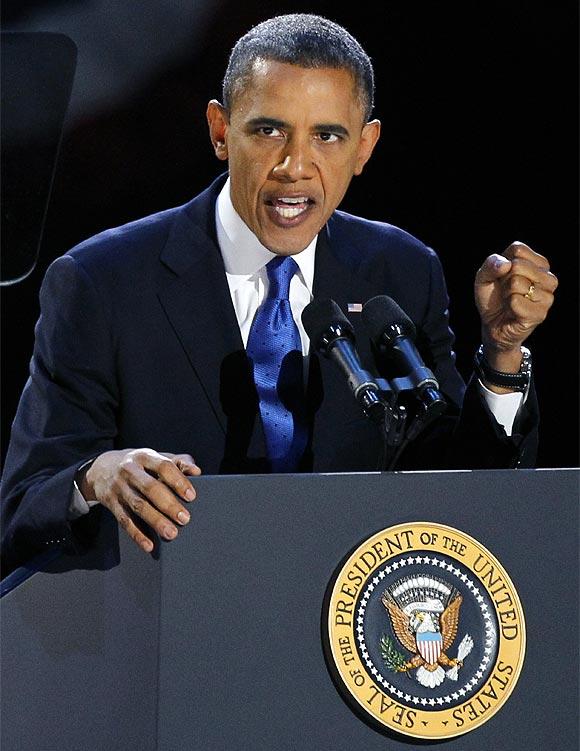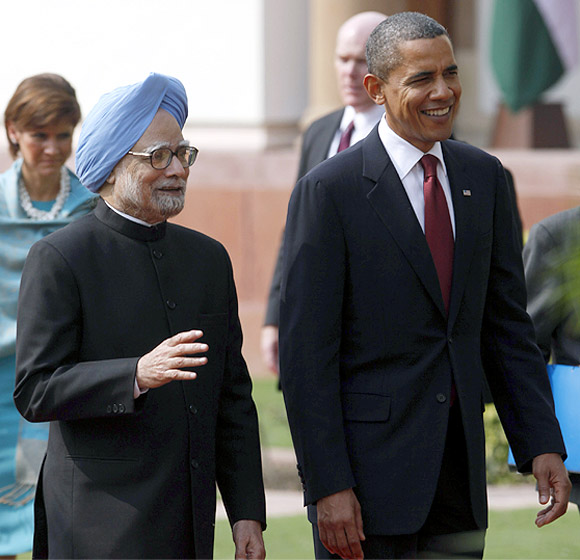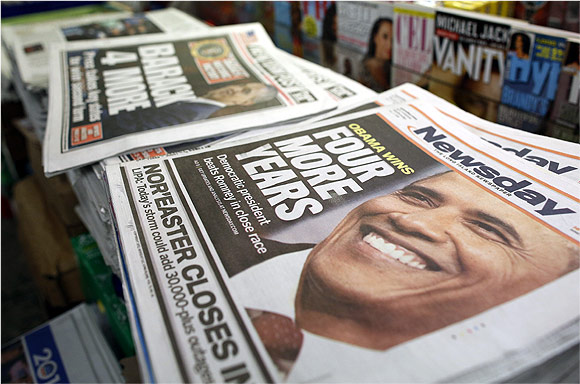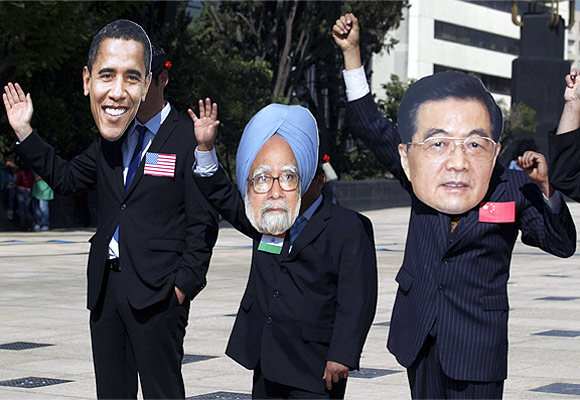
India must prepare itself to sign the Comprehensive Test Ban Treaty with US and the two nations are expected to join hands with Japan to counterbalance China.
Prime Minister Manmohan Singh and United States President Barack Obama are likely to meet each other briefly in less than 10 days, at the East Asian summit in Phnom Penh, Cambodia. The meeting seems likely to remain limited to a hearty handshake.
If Obama has shown determination on how to win an election, his new term will be marked by the publicly articulated need on how to grow the economy. He has already sought a bipartisan consensus on how to take more Americans out of unemployment, at 7.9 per cent.
India's political class and the business community have welcomed Obama's re-election. First, India knows it must continue to work with the world's most powerful man and try and shape its foreign policy in conducive ways.
...

Second, though Democrat presidents are usually more intrusive in everything from human rights to non-proliferation issues, India believes a highly ideological president, who as candidate promised to declare China a currency manipulator, would have been far more destabilising to the world.
A new pragmatism defines the Indian establishment, which seems far more confident about working with Democrat administrations than 14 years ago, when India went nuclear. Then, too, Bill Clinton was won around in a couple of years, with his India trip in 2000.
Chambers of commerce and industry believe Obama's new administration will practice what it preached during the campaign, on the need to "buy America" and restrict foreign goods and employment.
The Democrats have a domestic compulsion to show results on jobs. FICCI insiders point to the facts on the ground: information technology and IT-enabled sectors have been hurt particularly during Obama's reign, with restricted H-1B visas and denials to L-1 visa applications as high as 40 per cent.

"The dramatic rise in these rejections suggest a deliberate change in strategy towards Indian visa applications and the subsequent use of the visa regime as a potential trade barrier for a very important sector in India," a senior FICCI member said, noting restrictions by several US states on offshoring of IT projects continue.
Indian industry remains concerned about the "buy America" clauses. When Indian textile exporters -- 21 per cent of Indian exports worldwide and second in terms of goods exported to the US -- wanted to compete to make uniforms for employees managing security at American airports, they were told these must be "made in America."
Industry is also worried about a US law that forces foreign financial institutions to report information about US taxpayer accounts to the US Internal Revenue Service, which they fear will increase the cost of doing business in the US.
And, there is the Dodd-Frank Wall Street Reform and Consumer Protection Act, 2010, put in place to control Wall Street in the wake of the 2008 economic crisis. It says bank-holding companies with $50 billion or more in consolidated assets will be subject to enhanced scrutiny and standards. Indian banks would have to think twice before opening US branches.

Meanwhile, the Indian political establishment will be concerned with how the new Obama administration views issues such as Iran and nuclear non-proliferation. Analysts in the US say both will be high on the agenda but add Obama will stop short of an air strike against Iran.
India and the US have already agreed, quietly, on the need to reduce oil imports from Iran; and it is more than likely that with Iranian President Mahmoud Ahmadinejad losing leverage at home, a dialogue between Washington and Iran will open.
Still, it seems as if the Indian establishment must prepare itself to sign the Comprehensive Test Ban Treaty, with signs that the new Obama is determined to slowly dismantle America's and the world's nuclear armaments. Obama's strategists say this will be part of the legacy he intends to leave. Certainly, the US will have to start by ratifying the CTBT, on the cards since 1997.

Perhaps, a strategy between India, the US and Japan on how to counterbalance China will take up some time. A conversation on this could take place when Obama and Dr Singh meet at Phnom Penh, especially as the prime minister would have just flown in from Tokyo.
The rhetoric accompanying the Sino-Japanese spat over ownership of the Diaoyu/Senkaku islands in the South China Sea has reached alarming heights. Though Delhi has publicly taken no positions, its heart lies with the Japanese.
Yet, the fact that Phnom Penh is a friend of China will be a reminder to Obama and his friends that the world is a changed place. China, in the middle of its own political transition, has grown in strength. India, unwilling to accept Beijing's supremacy in the region, will welcome a re-energised US.
Informal synergies between India and the US in the Asia-Pacific could become the backbone for greater understanding on the trade and economic front in the next four years.
...